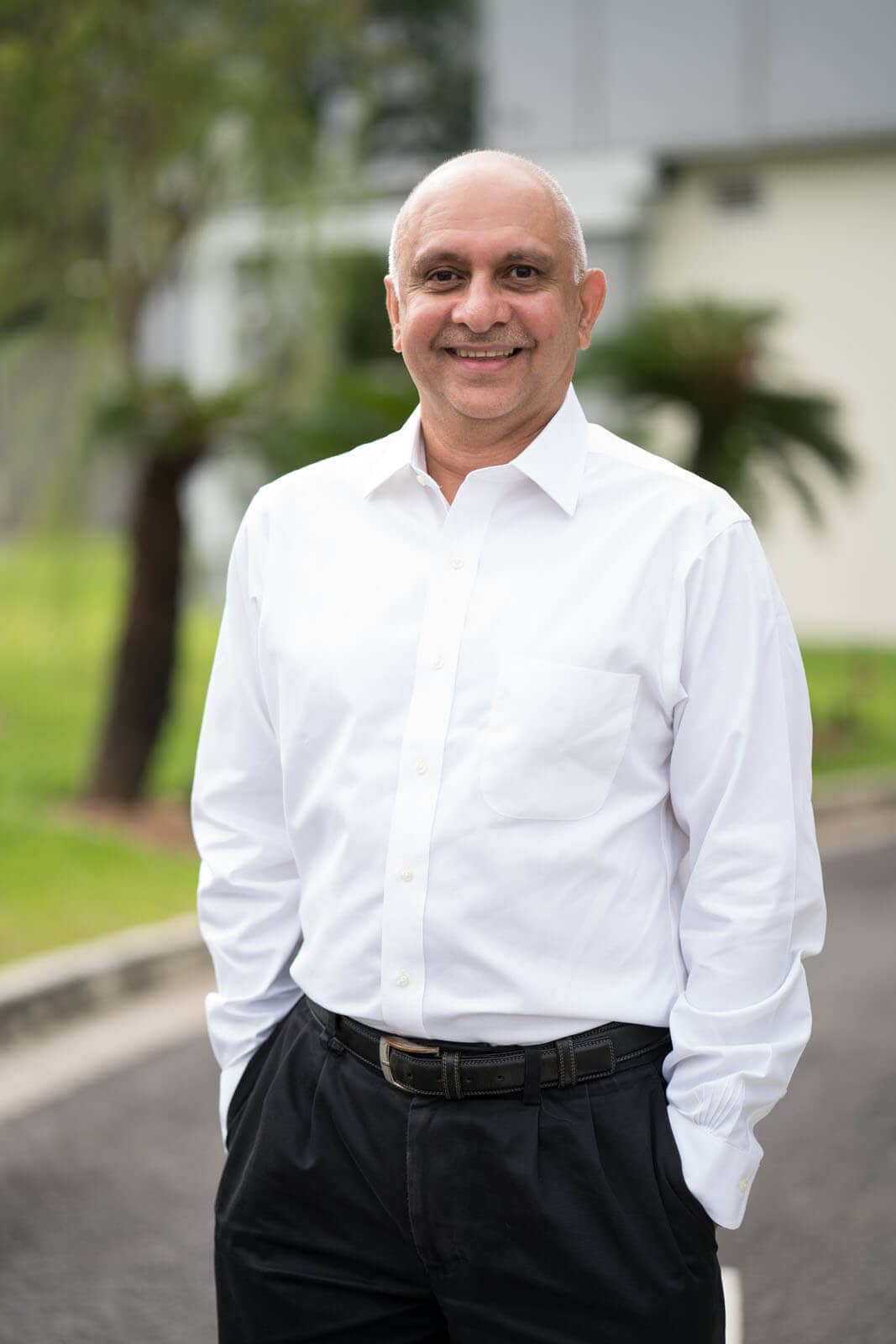
Associate Professor Sunil Sethi took up the role of President of the Asia-Pacific Federation of Clinical Biochemistry (APFCB) in 2017. He is a Senior Consultant Chemical Pathologist at the National University Hospital, Singapore; Associate Professor of Pathology at the National University of Singapore; and Group Director of the Applied Sciences Group with Singapore’s Health Sciences Authority. In this interview with Roche Diagram magazine, A/Prof. Sethi talks about his vision for the APFCB and some of his own personal passions.
1. How did you get involved in laboratory medicine?
I started out as an internist. When I finished my specialist medicine degree, I realised that biochemistry was a very dynamic area and that diagnostics was at the cutting edge. So I opted to focus on laboratory medicine instead. That was 30 years ago.
Back then, it was a very manual process, with lots of paperwork and doctors who were far less demanding. Today, there is a complete change. The process is now faster and much more robust in terms of quality and accuracy. Everything is digitised and automated. There is also a much greater expectation from doctors to deliver results that help them manage their patients better.
2. What is your key area of interest in laboratory medicine?
I really enjoy the operational areas of the laboratory – workflow, automation, process improvement and informatics. I’m most interested in how we can link these to improvements in patient outcomes.
I’m also particularly interested in test utilisation. If we don’t test correctly, the patient suffers. I don’t think we really know the extent to which tests are under or over-used. Both are a problem. If we over-order, we see incidental findings; if we under-order, we don’t optimise a patient’s management. We need good scientific evidence of what is the proper order set for a given disease, particularly chronic conditions. That’s led me to my latest project.
3. What is the latest project you’re working on?
I’m working on a dashboard to help doctors with the management of their diabetes patients. Most doctors spend only a minimal amount of time with a given patient. In diabetes, there are at least 20 biomarkers that need to be under control. How can a doctor know all of this quickly? At any given visit, he may only be able to focus on one or two of those biomarkers, which is not the best scenario for the patient. So, my vision for a dashboard is one that quickly shows all biomarkers for the specific patient. I hope to finalise this in 2018.
4. As the current president of the APFCB, what is your vision for the organisation?
The APFCB is the largest of the regional federations within the International Federation of Clinical Chemistry and Laboratory Medicine (IFCC). We cover a population of around 4.5 billion or around 60% of the world’s population. However, this is not a homogenous region and has the most diverse practice of laboratory medicine. There are of course, peaks of excellence. On the one hand, we have countries like Australia with high-level intellectual capacity and others like Japan and Korea with very good mechanical expertise (automation, robotics, keeping processes simple and streamlined). But then there are the developing countries, where laboratories face credibility issues with stakeholders not trusting the quality of results. Patients travel to other countries for screening and doctors reach out to others for confirmation of results.
My plan is to use the expertise of the advanced countries to help the others, so that we get to a point where, at a minimum, laboratory results are not questioned.
5. What are your thoughts around the future of the profession?
The next few years will be challenging for laboratory professionals. To move our profession forward, there are three key areas that we need to focus on.
Firstly, resilience. The advancements in diagnostic equipment mean that we essentially have a number of black boxes in our laboratories, and while they work 99.5% of the time, when they do break down, the manufacturer is called. I believe our laboratory technology specialists really need to be more innovative in the way they deal with problems so they can react quicker. Their patients rely on them to do so.
The second area is Information Technology (IT). This is the backbone of our laboratories and our technologists need this skill to optimise operations and result delivery, particularly critical result reporting.
And finally, patient interaction. My dream is that one day it will be the norm to see laboratory technologists doing ward rounds with the rest of the medical team and providing advice at the point of patient care. Of course, all this means that university courses need to be revised. What was relevant five years ago is no longer relevant today. Ours needs to be a profession which is empowered to take responsibility for the laboratory result.
We need to be operating at the highest end of our capabilities. When we do that, we will attract good people to the profession.
6. Is the laboratory profession ready for the changes ahead of them?
No, as a profession, we are not really ready right now. For one, we are far more comfortable talking to machines than to doctors and patients. However, younger people are much more adaptable. They like a challenge and a purpose. I’m sure they will be up to the task.
7. What are you reading now or recently that has left an impression on you?
I’m currently reading The Happiness of Pursuit. It’s by a young American writer called Chris Guillebeau. I also read his previous book, The Art Of Non-Conformity. The Happiness of Pursuit is essentially telling people to reexamine their lives and have some purpose. Pursue something with passion.
8. If you weren’t in the field of laboratory medicine, what would you be?
I always wanted to work in medicine, so I’m very fortunate. My back up plan was to join the army and become a pilot.
9. What inspires you and keeps you going?
The people I work with every day both in the laboratory and at the Health Sciences Authority. Both these teams encourage me to do more.
10. What do you do outside your work life?
Every year I participate in around three health missions across the region. I have been part of clinics in places like Indonesia, Thailand and Nepal. Last April, I spent four days in a remote village five hours away from Kathmandu, Nepal. We saw 600 patients in just three days – the whole village came to see us. We did blood pressure screening and saw many common ailments that were easily treatable. I’m also part of a longer-term program in Indonesia where we go back every three months to monitor a group of patients who are being treated for diabetes and hypertension. These missions are my way of spreading some goodwill. I find them very rewarding because the impact is enormous.
My two children, who are also doctors, now in their twenties, joined me on these trips from a very early age and now participate in their own medical missions.














